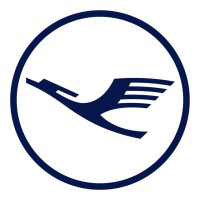Congestion in Asian Ports and Solar Efficiency Milestone
June 10, 2024, 3:34 am

Location: United Arab Emirates, Abu Dhabi Emirate, Khalifa City
Employees: 10001+
Founded date: 2003

Location: Germany, Hesse, Frankfurt
Employees: 10001+
Founded date: 1953
Total raised: $9.9B
PORTS & SHIPPING Maersk, a giant in the shipping world, is facing a storm of congestion in Asian ports. The Danish company is struggling to keep up with the delays caused by terminal congestion in ports across Asia and the Mediterranean. This congestion is like a traffic jam on the high seas, disrupting Maersk's vessel timetable and forcing them to cancel two westbound sailings from China and South Korea. The ripple effects of this congestion are being felt far and wide, with rising expenses and cascading delays in global supply chains.
The root of this chaos can be traced back to Houthi rebel strikes on commercial boats near the Suez Canal in Yemen. These strikes have forced major ocean carriers like Maersk, MSC, and Hapag-Lloyd to reroute their ships on a longer journey around Africa for safety reasons. This detour is like a detour on a road trip, adding time and cost to the journey.
Singapore, home to the second-largest container harbor in the world, is the latest victim of this congestion. The port is bursting at the seams, struggling to keep up with the influx of cargo. China, Dubai, Spain, and the US are also experiencing port congestion, creating a domino effect of delays and disruptions in the global shipping industry.
The storm of congestion is further exacerbated by high winds and adverse weather conditions at Chinese ports, hindering the smooth flow of cargo. The sudden surge in cargo demand, coupled with ongoing interruptions from ships diverting from the Red Sea, is like a perfect storm brewing in the world of shipping.
Meanwhile, in the realm of solar energy, Fraunhofer ISE has achieved a groundbreaking milestone in solar cell efficiency. The research institute has set a new record with 24% efficiency for Topcon solar cells, marking a significant leap forward in solar technology. This achievement is like reaching the peak of a mountain, pushing the boundaries of what was once thought possible in solar energy conversion.
By leveraging innovative materials and manufacturing techniques, Fraunhofer ISE has unlocked the full potential of Topcon solar cells, making them more efficient and cost-effective for widespread commercial use. These high-efficiency solar cells offer enhanced energy output and improved return on investment for solar power projects, paving the way for a brighter and more sustainable future.
As governments, businesses, and consumers increasingly prioritize clean energy solutions, advancements in solar cell efficiency play a crucial role in accelerating the adoption of renewable energy worldwide. The success of Fraunhofer ISE in optimizing Topcon solar cells holds profound implications for the broader solar industry, inspiring further research and development efforts across the industry.
In conclusion, the storm of congestion in Asian ports and the milestone achievement in solar efficiency are two sides of the same coin. While one represents the challenges and disruptions in the shipping industry, the other symbolizes the progress and innovation in the renewable energy sector. As we navigate through these turbulent waters, it is clear that resilience, adaptability, and innovation are key to overcoming obstacles and forging a path towards a more sustainable future.
The root of this chaos can be traced back to Houthi rebel strikes on commercial boats near the Suez Canal in Yemen. These strikes have forced major ocean carriers like Maersk, MSC, and Hapag-Lloyd to reroute their ships on a longer journey around Africa for safety reasons. This detour is like a detour on a road trip, adding time and cost to the journey.
Singapore, home to the second-largest container harbor in the world, is the latest victim of this congestion. The port is bursting at the seams, struggling to keep up with the influx of cargo. China, Dubai, Spain, and the US are also experiencing port congestion, creating a domino effect of delays and disruptions in the global shipping industry.
The storm of congestion is further exacerbated by high winds and adverse weather conditions at Chinese ports, hindering the smooth flow of cargo. The sudden surge in cargo demand, coupled with ongoing interruptions from ships diverting from the Red Sea, is like a perfect storm brewing in the world of shipping.
Meanwhile, in the realm of solar energy, Fraunhofer ISE has achieved a groundbreaking milestone in solar cell efficiency. The research institute has set a new record with 24% efficiency for Topcon solar cells, marking a significant leap forward in solar technology. This achievement is like reaching the peak of a mountain, pushing the boundaries of what was once thought possible in solar energy conversion.
By leveraging innovative materials and manufacturing techniques, Fraunhofer ISE has unlocked the full potential of Topcon solar cells, making them more efficient and cost-effective for widespread commercial use. These high-efficiency solar cells offer enhanced energy output and improved return on investment for solar power projects, paving the way for a brighter and more sustainable future.
As governments, businesses, and consumers increasingly prioritize clean energy solutions, advancements in solar cell efficiency play a crucial role in accelerating the adoption of renewable energy worldwide. The success of Fraunhofer ISE in optimizing Topcon solar cells holds profound implications for the broader solar industry, inspiring further research and development efforts across the industry.
In conclusion, the storm of congestion in Asian ports and the milestone achievement in solar efficiency are two sides of the same coin. While one represents the challenges and disruptions in the shipping industry, the other symbolizes the progress and innovation in the renewable energy sector. As we navigate through these turbulent waters, it is clear that resilience, adaptability, and innovation are key to overcoming obstacles and forging a path towards a more sustainable future.

